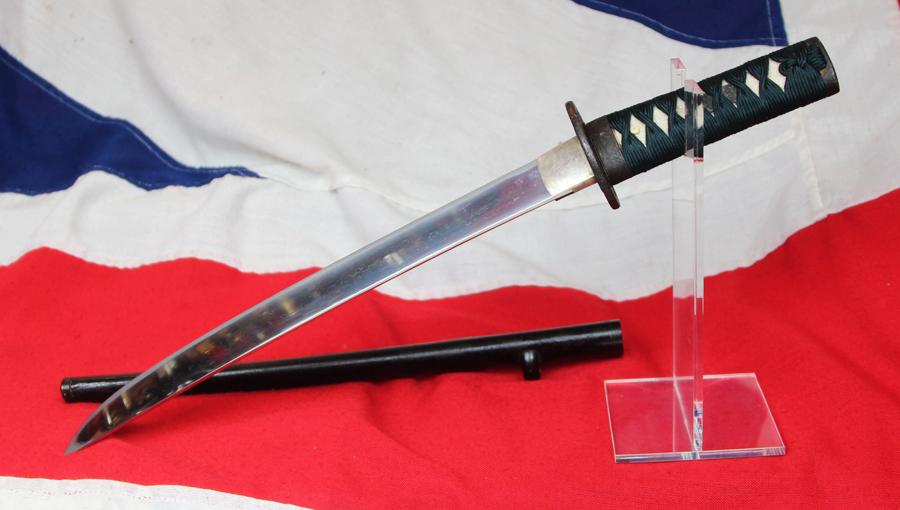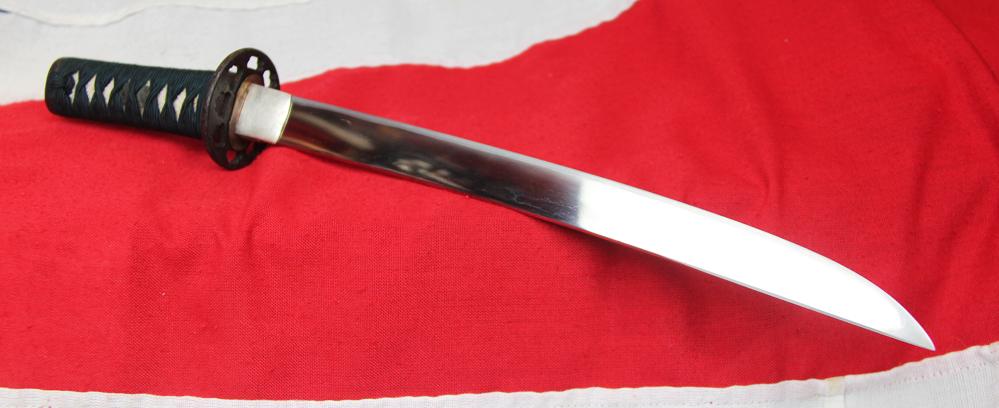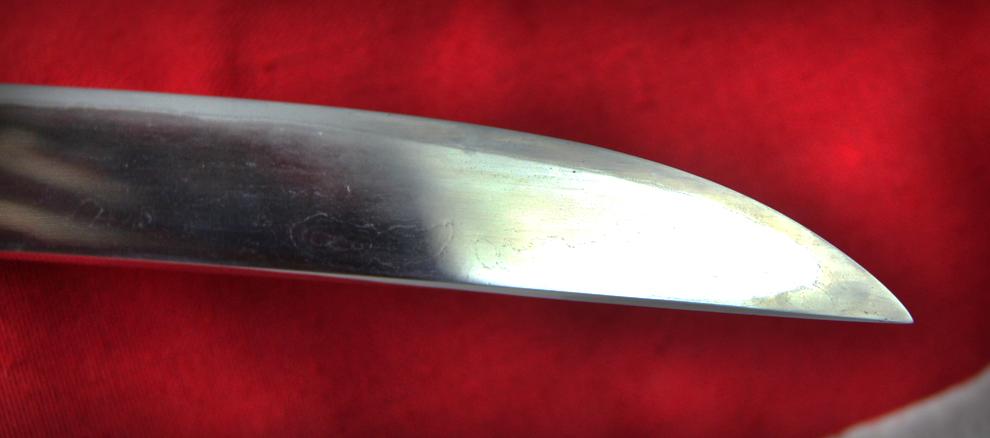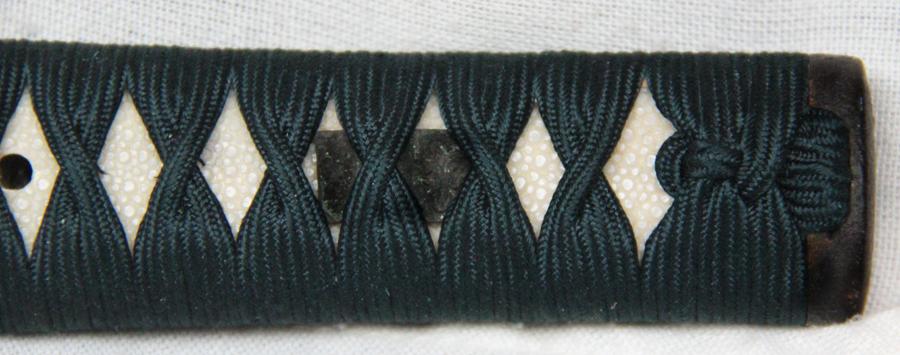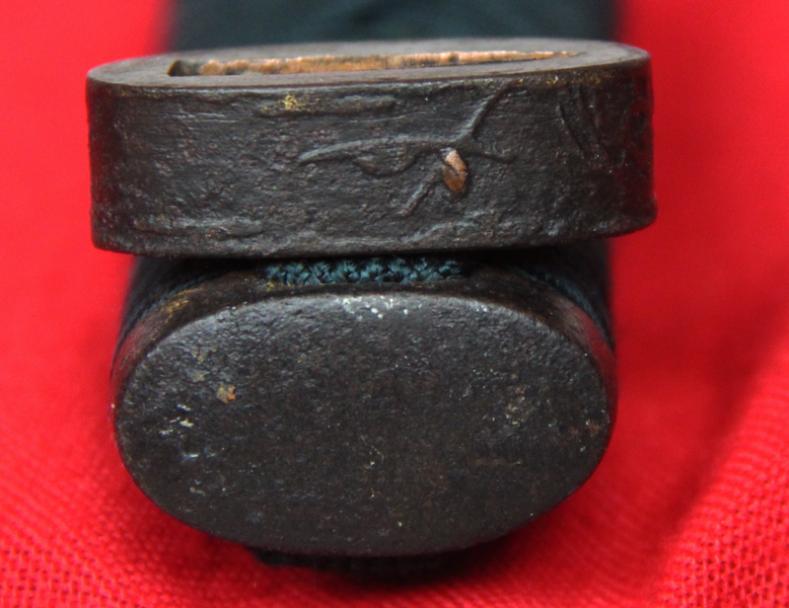A Good Koto Era Samurai 0-Tanto Signed Mihara ju Masaiye, An Impressive 'Shibui' Beauty
Circa 1530. a large sized tanto with all original Edo era fittings and mounts, a very nice sukashi tsuba in iron, iron Higo style fittings, beautiful polish blade with fine sugaha hamon. Blue tsuka-ito over good quality rayskin, good Edo period ishime lacquer saya with recessed pocket for a kozuka knife. From the school of Mihara sword smiths. known as shibui which is old Japanese for 'quiet'. a fine early tanto mounted beautifully but unobtrusively, restrained and thus 'shibui'. Mihara den was founded at the beginning of the fourteenth century, in the Bingo province, by sword maker Masaiye. Other prominent masters of this school are Masanobu, Masanori, Masamori, Masachika and already mentioned Masaiye. The latter founded a family that made swords to the end of the Edo era. Mihara's school upheld the tradition of Yamato, which belonged to Gokaden (the school of Five Traditions). With the beginning of the Kamakura period, tanto were forged to be more aesthetically pleasing, and hira and uchi-sori tanto were the most popular styles for wars in the kamakura period. Near the middle of the Kamakura period, more tanto artisans were seen, increasing the abundance of the weapon, and the kanmuri-otoshi style became prevalent in the cities of Kyoto and Yamato. Because of the style introduced by the tachi in the late Kamakura period, tanto began to be forged longer and wider. The introduction of the Hachiman faith became visible in the carvings in the tanto hilts around this time. The hamon (line of temper) is similar to that of the tachi, except for the absence of choji-midare, which is nioi and utsuri. Gunomi-midare and suguha are found to have taken its place. In Nambokucho, the tanto were forged to be up to forty centimetres as opposed to the normal one shaku (about thirty centimetres) length. The tanto blades became thinner between the uri and the omote, and wider between the ha and mune. At this point in time, two styles of hamon were prevalent: the older style, which was subtle and artistic, and the newer, more popular style. Blades could be of exceptional quality. As the end of the period neared, the average blade narrowed and the sori became shallow. 19 1/2 inches long overall, blade 13 1/2 inches long tsuba to tip.
Code: 23876

